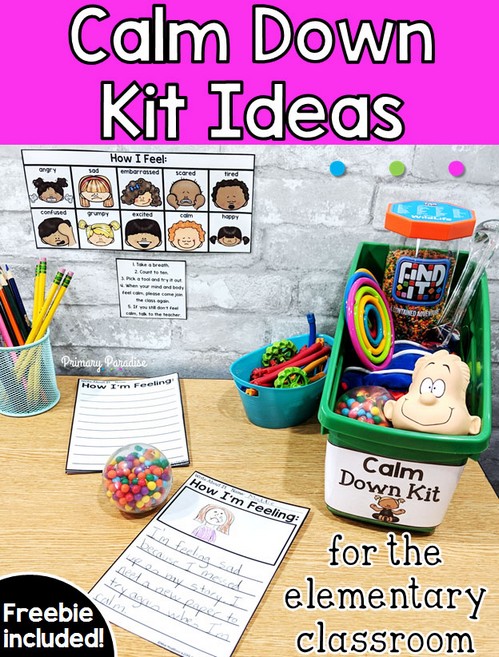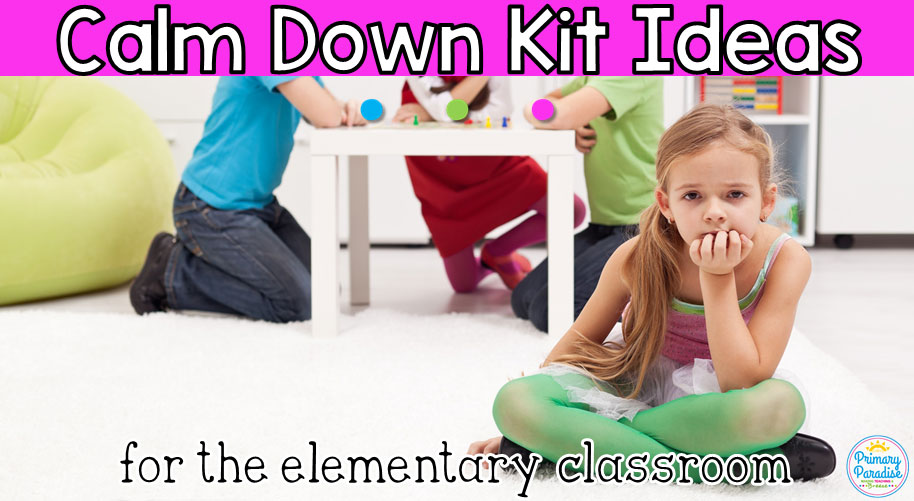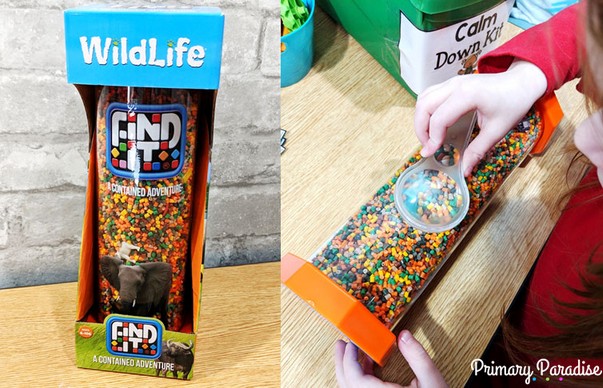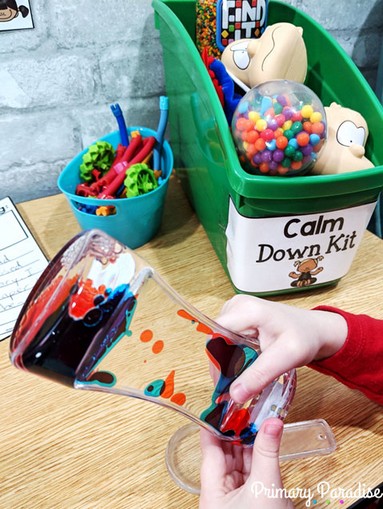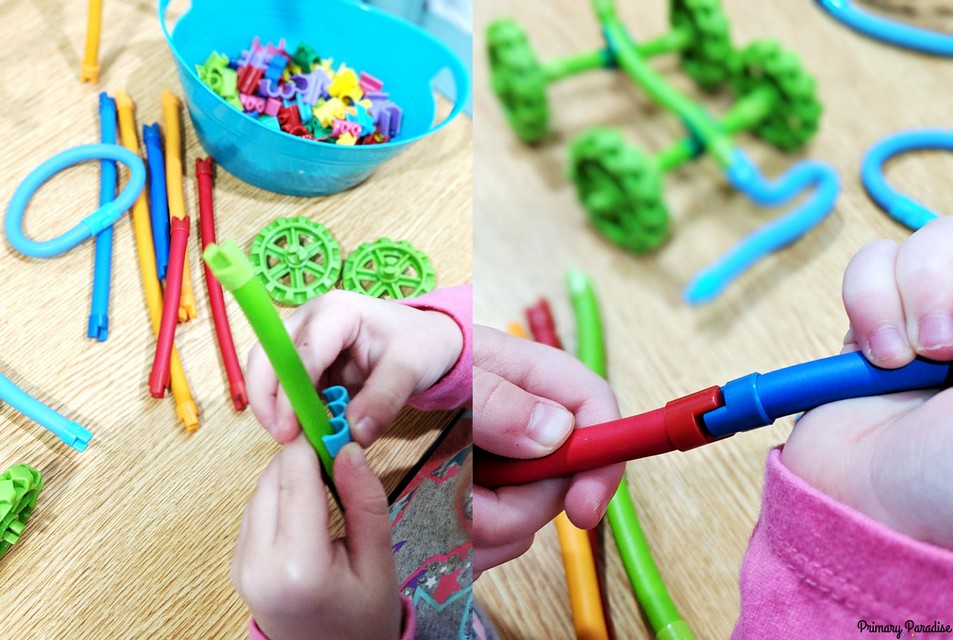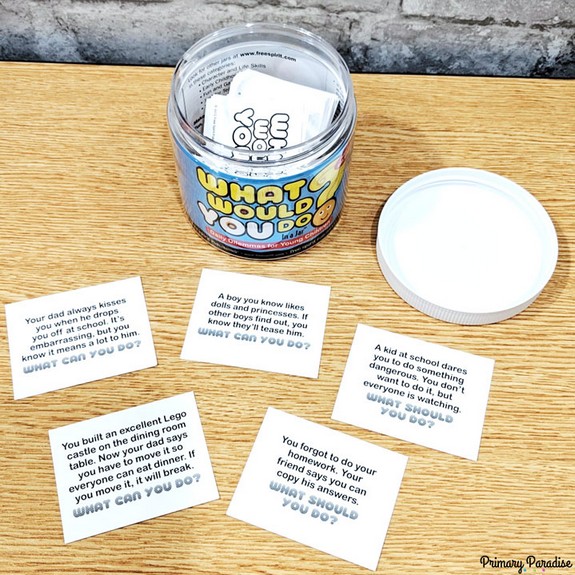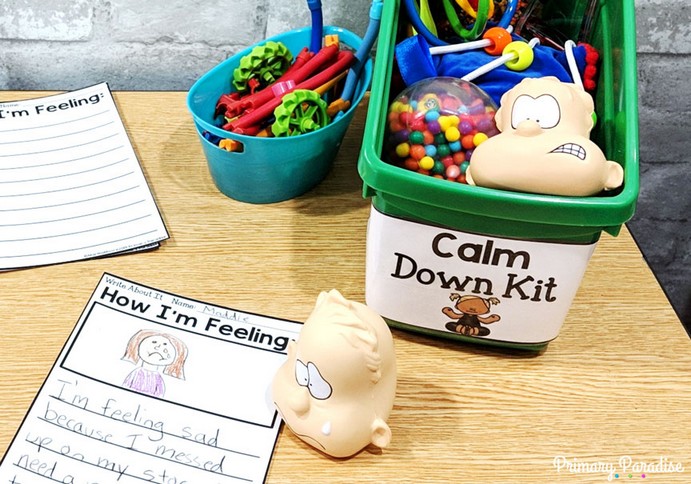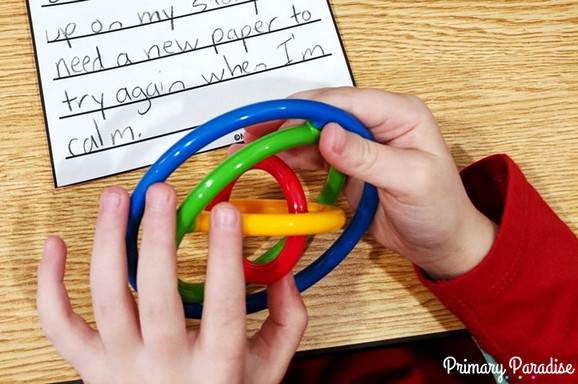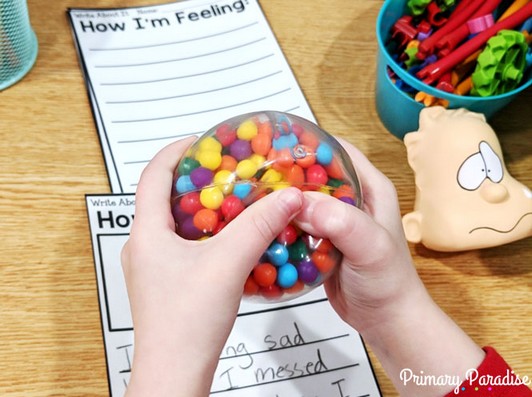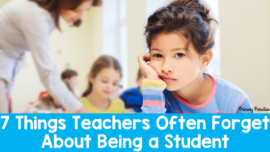Help students to self regulate when they’re upset with a calm down kit. It provides students with a safe space to process emotions and feelings. It’s particularly helpful for students with sensory processing needs. It teaches students life long coping skills, cuts down on classroom management issues, and takes some of the burden off of you as a teacher. But, what should you put in a calm down kit? Today I’m going to share some helpful tools to add to your calm down corner.
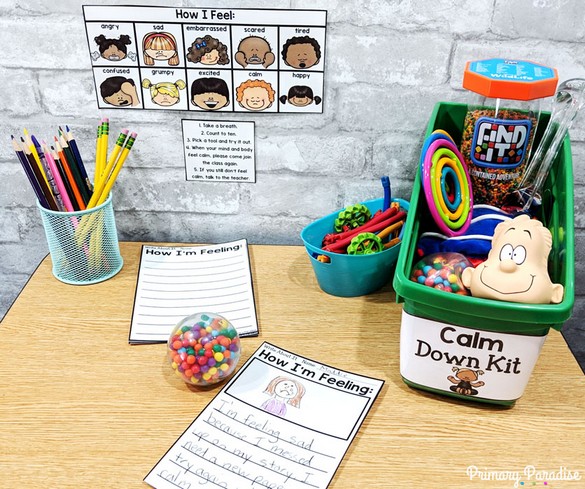
I’d like to thank Steps to Literacy for sponsoring this post. I received compensation for this post, but all opinions, ideas, and thoughts are mine. I only share about resources, products, and companies that I use and believe, in, and believe will be beneficial to you as well!
How to Set Up a Calm Down Area in Your Classroom
Before we get into what you can include in your calm down kit, let’s talk about set up. First, find an area in your classroom that is a little bit away from the main area. If possible, you can set up a desk or corner with your calm down essentials. With a small classroom, that can be tricky, so it might be as simple as putting a bin on the floor in the corner. Whatever your restrictions, work with the space in your classroom. It’s better to have a small, simple area for students to go take a few breaths than nothing at all.
Calm Down Corner Expectations
Once you have your area set up, take some class time to explain what the area is for and how you expect it to be used. This might vary on your grade level and your students. Typically, I’d recommend setting clear expectations and boundaries. It would be a great idea to come up with the calm down corner expectations together with you, and then have them sign them.
Here are Some things to think about. Explain the times students may use the calm down corner. For examples, when they’re angry, sad, overwhelmed, frustrated, overly excited. Explain the times they can’t. For example in the middle of a timed test or when another student is there. I’d set a boundary of having only one student there at a time, and that students are expected to use the space and come back to work as soon as they are able. This area should not be a play area. It’s important to stress that students who aren’t using it correctly may lose the privileged. Typically, students find it novel in the beginning and might overuse the area, but will quickly regulate their use once it’s no longer novel.
Next, be sure to talk about how to effectively calm down your mind and body. It can be as simple as modeling and then having students practice some deep breathing and counting to 10. You could show students some simple, sitting and standing yoga poses. You can teach students to self reflect using a calm down kit reflection slip. Lastly, show students how each tool in your calm down kit can be used as a tool to help them relax their mind and body. Be sure to show them how to put everything back before they leave the space. (Grab the reflection slips, how I feel card, and bin label for free here.)
What Goes in Your Classroom Calm Down Kit
You can really put an endless amount of sensory items in your calm down kit for students to use, but the goal isn’t to just throw in a bunch of stuff. Rather, you want to think carefully about selecting items that will calm different students down. You don’t need to include a ton of choices, either. A few items will really go a long way. And, lastly, pick items that don’t make a mess and help students calm down both their minds and their bodies.Here are some of my favorite calm down items to include in a calm down kit. Many of these items come in sets, so you could go together with your grade level to purchase them and then split the cost and supplies!
Calm the Mind: Calm Down Kit Tools
First, it’s helpful to include tools that will distract and calm student minds. I love this WildLife Find It Game because it’s a great way to let students calm their minds by keeping them busy. On the top of the tube, it lists all of the animals hidden inside for students to find. Students follow that list, use the small prompt cards that are included, or simple take a magnifying glass and move the tube around to see what they can find. However you choose to allow them to play, this is a great, mess free option for a calm down kit.
This Liquid Layers Floating Color Drop is another fantastic option for your calm down kit. Students will love flipping it and watching the colors drip and combine. There’s something so calming and soothing about watching this. It’s made of sturdy acrylic, and is the perfect size for little hands.
I’ve shared about these Magic Wand Connectors when I wrote about STEM tools for the classroom. These are also a great option to keep hands and minds busy and give students a chance to calm down. They’re easy to use, bendable, and another great option for your calm down kit. Sometimes a building break is just what a student needs to calm down and get back to learning.
Lastly, these What Would You Do? Cards in a Jar are another option to help students calm their minds. This set includes 101 prompts for students to think about. It’s not only a great distraction that can allow them to calm down their minds, but it also will help them think about their choices they make and how to regulate their choices.
Calm the Mind: Calm Down Kit Tools
It’s also helpful to include tools that will help students calm their bodies. Quiet fidget toys and these cute stress balls are a great option for this. I love that these stress squeeze heads show different emotions, and students will definitely think they’re fun.
These Gyrobi Fidgets are a great addition to your calm down corner because they’re quiet, fun, and colorful. They’re perfect for busy little hands, and are made of durable plastic. They twist, spin, and rotate, and come in a variety of colors.
These Sensory Bead Balls provide great sensory input and have a very unique feel. They’re made of a vinyl ball with colorful beads inside. Perfect for students who need something to squeeze, but need a little more sensory input than the stress balls.
Lastly, this Clutching Fidget Bag is weighted like a heavy bean bag. The soft fleece and chenille fidget bag has movable beads on the front. It’s perfect for fidgety hands that could use some sensory input as well. Students will enjoy rubbing the fuzzy, red side moving the beads on the other side, and feeling the weight in their hands.
Whatever you choose to add to your calm down corner, it will be a wonderful addition to your class. Your students will have a safe space to work on self-regulations, and you might just find that you have to manage less behavior issues in your classroom!
Want to see more of my favorite resources from Steps to Literacy? Check out the posts below.
Listening Libraries Diverse Chapter Books Rich Mentor Texts NGSS Science Book Collections Back to School Favorites White Board Tips Tactile Letters Christmas Crafts Small Group Organization STEM Tools Brain Breaks
You can join my FREE Facebook Club for k-2 teachers here!
Find me on Instagram, Facebook, Twitter, and Pinterest!
